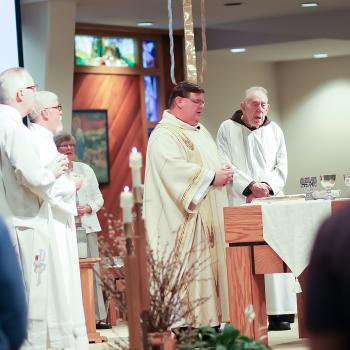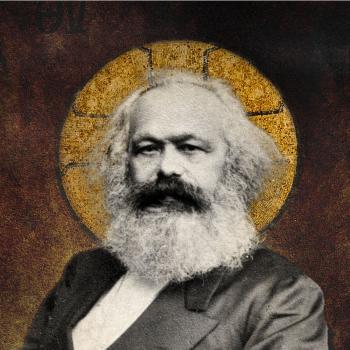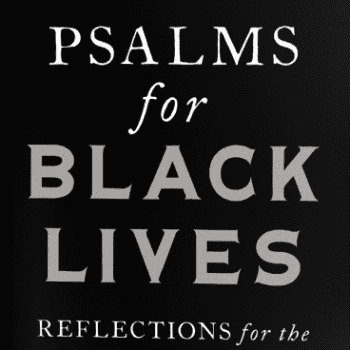“Ultimately, the most advanced spiritual fathers and mothers advised me that silence, stillness and the peace of God is in your heart – independent of time or place. So in the caves of apartment buildings, in the alleys of skyscrapers in cities, and in the deserts and forests of rural outposts – prayer and silence is the method of best connection with God.” — Norris Chumley, from Be Still and Know
Early Christian spirituality has become a topic of growing fascination and study among Christians of all stripes. In Be Still and Know: God’s Presence in Silence, a new book sure to appeal to this growing audience, scholar Norris Chumley delivers a rich and comprehensive look at the history and practice of one of the more austere early practices: the practice of silence, or “hesychasm” in Greek, as experienced in monasteries in Egypt, Greece and Romania. Tracing the lives of the early desert monks, as well as some of the earliest Saints who practiced silence, Chumley offers an insider’s view into this ancient world of prayer that still holds wisdom and meaning for us today.
Here, Chumley talks about his book and how it happened to change his own spiritual life in the process.
 How is “silence” a path to God?
How is “silence” a path to God?
When one practices silent contemplation and prayer, it is both an attempt to put oneself aside and let God be at the center of your life and existence, and a method of stilling or retreating from the random noise and cacophony of the world. My book takes the position from the teachings of the ancient desert and forest fathers and mothers that it is indeed possible to experience the presence of God. Think of it as a process of elimination: once the internal and external distractions are quieted or eliminated, all that remains is the Likeness of God. As Symeon the New Theologian discussed in the 10th century, the experience of God as transcendent “uncreated Light” has been likened to that of Christ’s apostles witnessing His transfiguration on Mt. Tabor.
What is the origin of the practice of silence (hesychia, in Greek)?
We cannot say for sure, but The First Epistle of St. John and St. Paul’s Letter to the Corinthians convey the promise of a vision of God associated with being sons of God, given by grace through love of the Father. There are accounts of hesychasts, Greek for those who practice stillness, silence and prayer from the late 1st century, such as St. Antony who retreated into total solitude in the Egyptian desert, to a strong tradition of monastics in the 6th century at St. Catherine’s Monastery (such as the Abbot, St. John Climacus) at the foot of Mt. Sinai, to a community of Athonite monks on Holy Mount Athos, a peninsula in Greece in the 13th and 14th centuries, such as St. Gregory Palamas.
What is the deepest experience of silence, as practiced by people across the centuries? What is its greatest ‘potential’ and/or benefits?
It is difficult to describe such deep experiences in words, as God is indescribable! From eleven centuries of monks at Mt. Athos, and hesychasts in the desert lands of Egypt, Roman Palestine, and Syria came a collection of words and instructions about the experience of God and the monastic practice of hesychia called The Philokalia, a Greek word meaning, “the love of the beautiful, the exalted, the excellent…” In it, several monks describe an experience or state they called nous, another Greek word and concept denoting a part of the human condition related to intellect (as Plato and St. Evagrius discussed) or as St. Gregory of Sinai wrote, “Noetic prayer is an activity initiated by the cleansing power of the Spirit and the mystical rites celebrated by the intellect. Similarly, stillness is initiated by attentive waiting upon God, its intermediate stage is characterized by illuminative power and contemplation, and its final goal is ecstasy and the enraptured flight of the intellect towards God.”
Why did the ancients find it necessary to put the things of the world aside to be silent in order to commune with God? And what was it specifically about the desert that drew them on their journeys?
The desert fathers and mothers were human beings, like we are, with problems and challenges. Like us, they got into dire straights and seemingly impossible predicaments, and sought relief and salvation from God. They had relationship problems, extra-marital affairs, tax bills they couldn’t pay, trouble at work, they ate and drank too much, or they didn’t have enough food, clothing or shelter, just like us, but in dramatically different places and times. They learned that if they only depended on the things of the world, which are temporal and ultimately unsatisfying, they were doomed. The ancients looked to God, the Father, in His Son, Jesus Christ, in order to fulfill His promise of salvation and redemption from sin and error. They took the Bible seriously, repenting and renouncing their dependence on worldly goods, and retreated to the stillness of the desert.
Peace, compassion and co-existence through hesychia, wherever it is now practiced, began in the desert. For Christian monks and nuns, the desert is the fertile ground of peace. As it was some 2,000 years ago, the desert is still a perfectly quiet and desolate place for worship and asceticism, and remains one of the great centers of hesychia despite conflicts, war and terrorism that surround them. Somehow through the vicissitudes of the harsh desert life the monasteries and the ascetics have not only survived, through their faith and dedication to God they thrive.
You introduce us to a number of saints/practitioners from the early Church in your book. Who are some of your favorites, and why?
I really love St. Antony, because he was such a model of prayer and contemplation. I had the great blessing to visit his home of 40 years, a cave at the top of a mountain in the Egyptian desert. You can also “virtually” visit it in the companion film (details at www.bestillandknow.info). I also really love the writings of St. Symeon the New Theologian, because he writes a lot about direct experiences of God, through prayer and silence.
What inspired you to write Be Still and Know? Who did you write it for?
It’s a result of my graduate studies in the fields of Early Christianity and Theology. I’ve always been a lover of God; one who loves to pray and contemplate God in silence, since I was a very young child. I wrote this book for people who want to deepen their experiences of God, and study ancient mysticism and Christian antiquity. It is intended for scholars and students at universities and seminaries, church groups, and for individual study.
What surprised you most in writing this book?
I discovered in researching that I was by no means the first one to attempt to know and experience God through Christian prayer and meditation. I also was largely unaware of the great Christian traditions of silence and prayer, or of monasticism. That may sound a bit odd, but until I went back to graduate school and studied Christian origins and Theology, I knew little about these ancient practices and writings that are the very core of Christianity and Church rituals!
Did your own spiritual life change as a result of researching and writing this book?
Yes, profoundly. By the grace of God I have converted to Greek Orthodox Christianity, from Protestantism. I studied, prepared, was re-Baptised and accepted into the oldest Church there is. I found my true and original spiritual home.
How would the ascetics of the past encounter our overly noisy world today, and what might they say about the importance of silent prayer and practice? How might they advise us in engaging contemplative practices? Is there a modern equivalent to living as a hermit in the desert to grow closer to God? How, as you ask in your book, are we to find the desert in today’s busy world?
I honestly don’t think asceticism has changed much in 2,000 years! The world around monasteries, and places of silent worship and spiritual retreat certainly have changed, of course. Most monks and nuns I know teach me that the world is quite fallen, and there is nothing in it that is dependable. The older I get, the more I agree with them. As the ancients wrote about the importance of silent prayer and practice, it is as relevant today to find peace and love, through silence and connection with God.
The reason I wrote Be Still and Know: God’s Presence in Silence is for people to encounter ancient wisdom, and to a great extent, be able to practice what ancient ascetics taught, in totally modern and accessible ways. The last few chapters are all about adapting these practices to people’s contemporary lives, without having to retreat to a desert cave, or become a monk or nun. One thing that can be done is to say the Jesus Prayer, probably the most ancient prayer there is. Try it first outloud, and then whispering, then just keep it in mind: “Lord Jesus Christ, Son of God, have mercy on me, a sinner.”
Ultimately, the most advanced spiritual fathers and mothers advised me that silence, stillness and the peace of God is in your heart – independent of time or place. So in the caves of apartment buildings, in the alleys of skyscrapers in cities, and in the deserts and forests of rural outposts – prayer and silence is the method of best connection with God.
Where can people find communities to practice silence? What encouragement – and caution – would you give people seeking to explore this practice in their lives?
A great place to start is right now wherever you are. Say a prayer to God, then get quiet and listen.
You can also go to (or return to) Church, and find a community of like-minded people who also love God. Find the Church that is best for you, and dive in. My only caution is that there is no perfect church, or perfect religion – they’re filled with people, and we aren’t perfect. That’s where forgiveness and compassion come in, and those are wonderful and essential practices, too.
To read an excerpt – and for more on Be Still and Know – visit the Patheos Book Club here.












